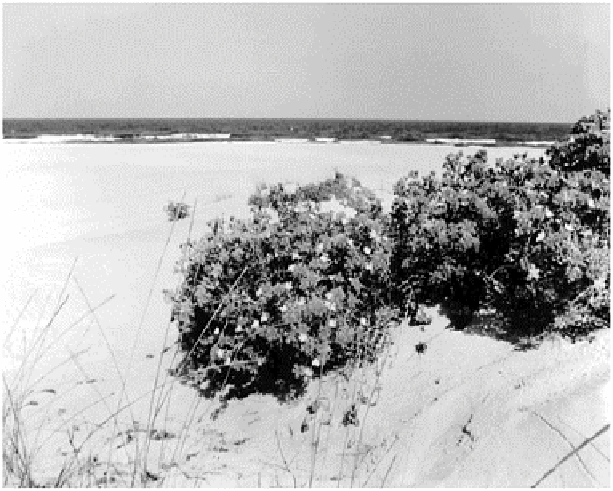Environmental Engineering Reference
In-Depth Information
convert the mobile dune into a fixed dune which is more favourable for a larger number
of less xerophytic and less hardy plants. The biomass of marram decreases as one moves
inland and the dunes become older. A larger range of grasses and annual herbs are able to
colonize these
yellow dunes
; they are semi-fixed
Plate 21.4
Stressful habitats at the start of successions
support only a few well adapted species. Only a grass and a
chenopod are able to tolerate the arid and saline environment
in the pioneer stage of this psammosere.
Photo: Ken Atkinson.
dunes, much of whose surface is still not covered by vegetation. Plants must be able to
withstand stress from both heat and drought. Sands hold little moisture, and the water
table will be several metres below dune surface. Spring annuals flower and set seed
before the higher soil temperatures of summer.
Soils in embryo and yellow dunes consist mainly of quartz grains. They have a low
cation exchange capacity, are deficient in nutrients and have a high calcium carbonate
content from shells. This, together with salt spray, makes them very alkaline, with a high
pH. Nitrogen is considered to be critical for marram grass and sea buckthorn, and most is
fixed from atmospheric nitrogen by nitrogen-fixing bacteria which live in the root zone of
both these plants. Beyond the yellow dune zone, the
grey dune zone
is marked by the
appearance of mosses and lichens. These older and more stable dunes have a larger cover
of plants, with a more diverse flora of grasses, heaths and shrubs. Non-maritime species
(e.g. Scots pine,
Pinus sylvestris
) start to make their appearance. Wherever depressions or

